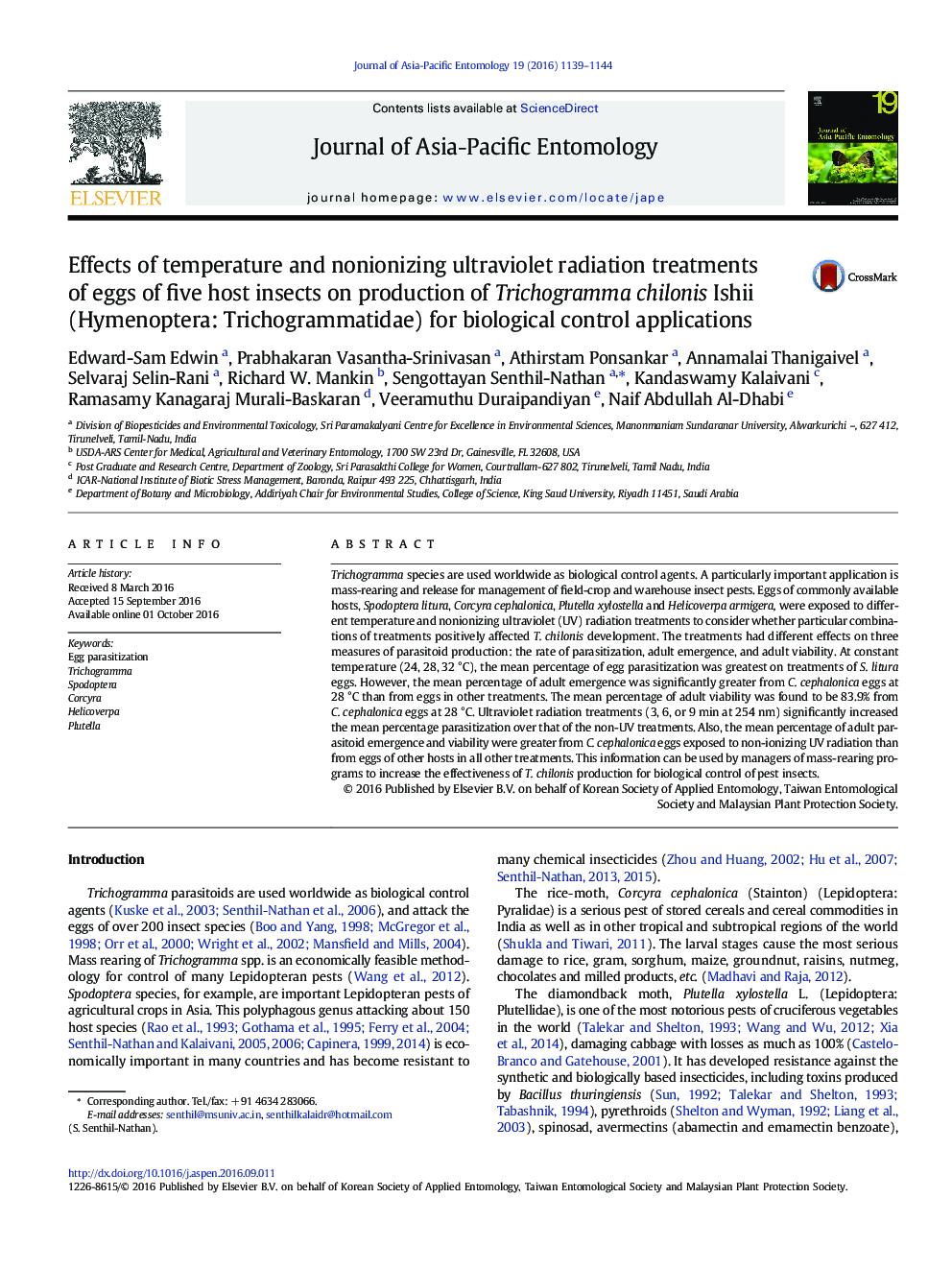| Article ID | Journal | Published Year | Pages | File Type |
|---|---|---|---|---|
| 4524352 | Journal of Asia-Pacific Entomology | 2016 | 6 Pages |
Abstract
Trichogramma species are used worldwide as biological control agents. A particularly important application is mass-rearing and release for management of field-crop and warehouse insect pests. Eggs of commonly available hosts, Spodoptera litura, Corcyra cephalonica, Plutella xylostella and Helicoverpa armigera, were exposed to different temperature and nonionizing ultraviolet (UV) radiation treatments to consider whether particular combinations of treatments positively affected T. chilonis development. The treatments had different effects on three measures of parasitoid production: the rate of parasitization, adult emergence, and adult viability. At constant temperature (24, 28, 32 °C), the mean percentage of egg parasitization was greatest on treatments of S. litura eggs. However, the mean percentage of adult emergence was significantly greater from C. cephalonica eggs at 28 °C than from eggs in other treatments. The mean percentage of adult viability was found to be 83.9% from C. cephalonica eggs at 28 °C. Ultraviolet radiation treatments (3, 6, or 9 min at 254 nm) significantly increased the mean percentage parasitization over that of the non-UV treatments. Also, the mean percentage of adult parasitoid emergence and viability were greater from C. cephalonica eggs exposed to non-ionizing UV radiation than from eggs of other hosts in all other treatments. This information can be used by managers of mass-rearing programs to increase the effectiveness of T. chilonis production for biological control of pest insects.
Keywords
Related Topics
Life Sciences
Agricultural and Biological Sciences
Animal Science and Zoology
Authors
Edward-Sam Edwin, Prabhakaran Vasantha-Srinivasan, Athirstam Ponsankar, Annamalai Thanigaivel, Selvaraj Selin-Rani, Richard W. Mankin, Sengottayan Senthil-Nathan, Kandaswamy Kalaivani, Ramasamy Kanagaraj Murali-Baskaran, Veeramuthu Duraipandiyan,
